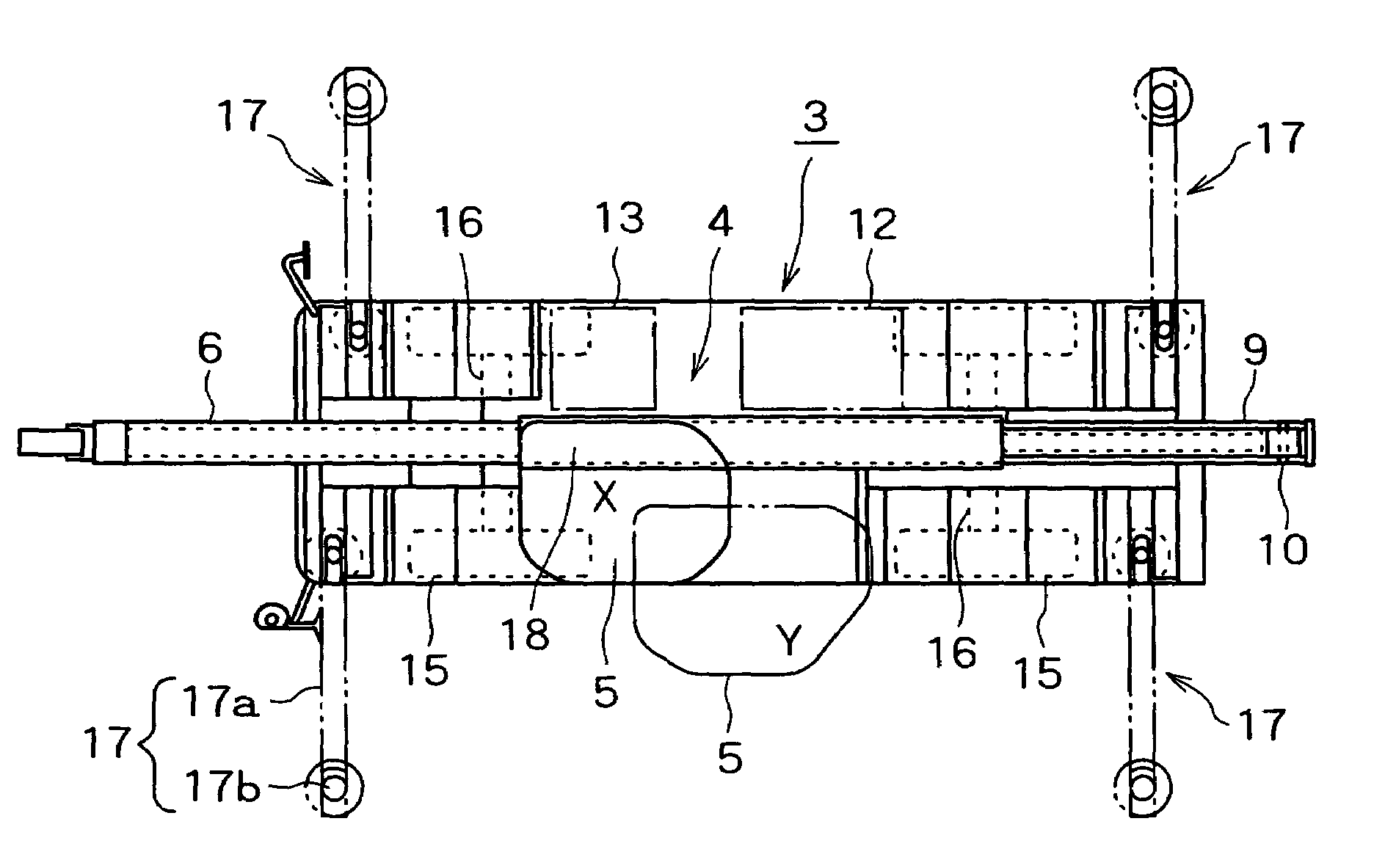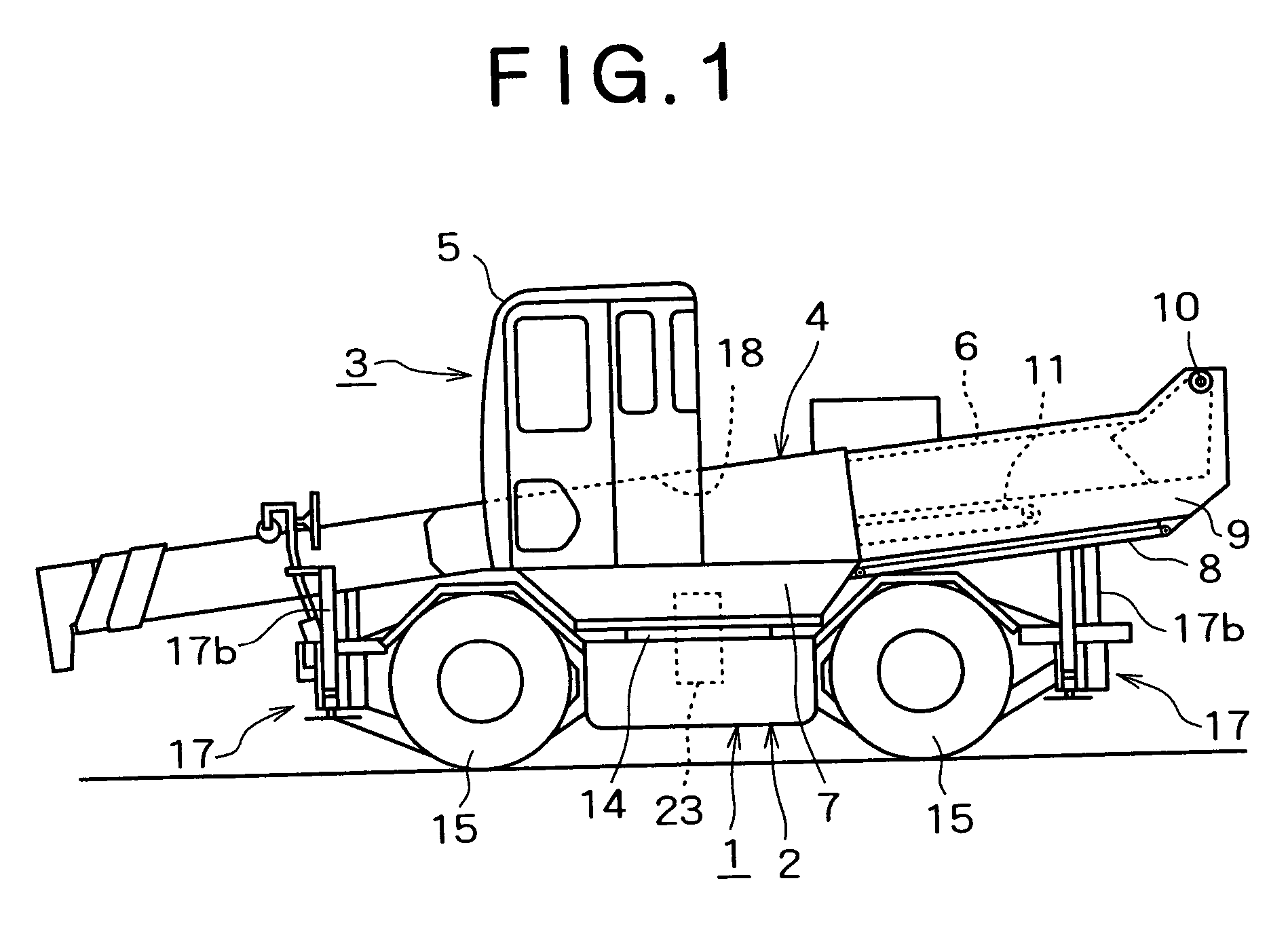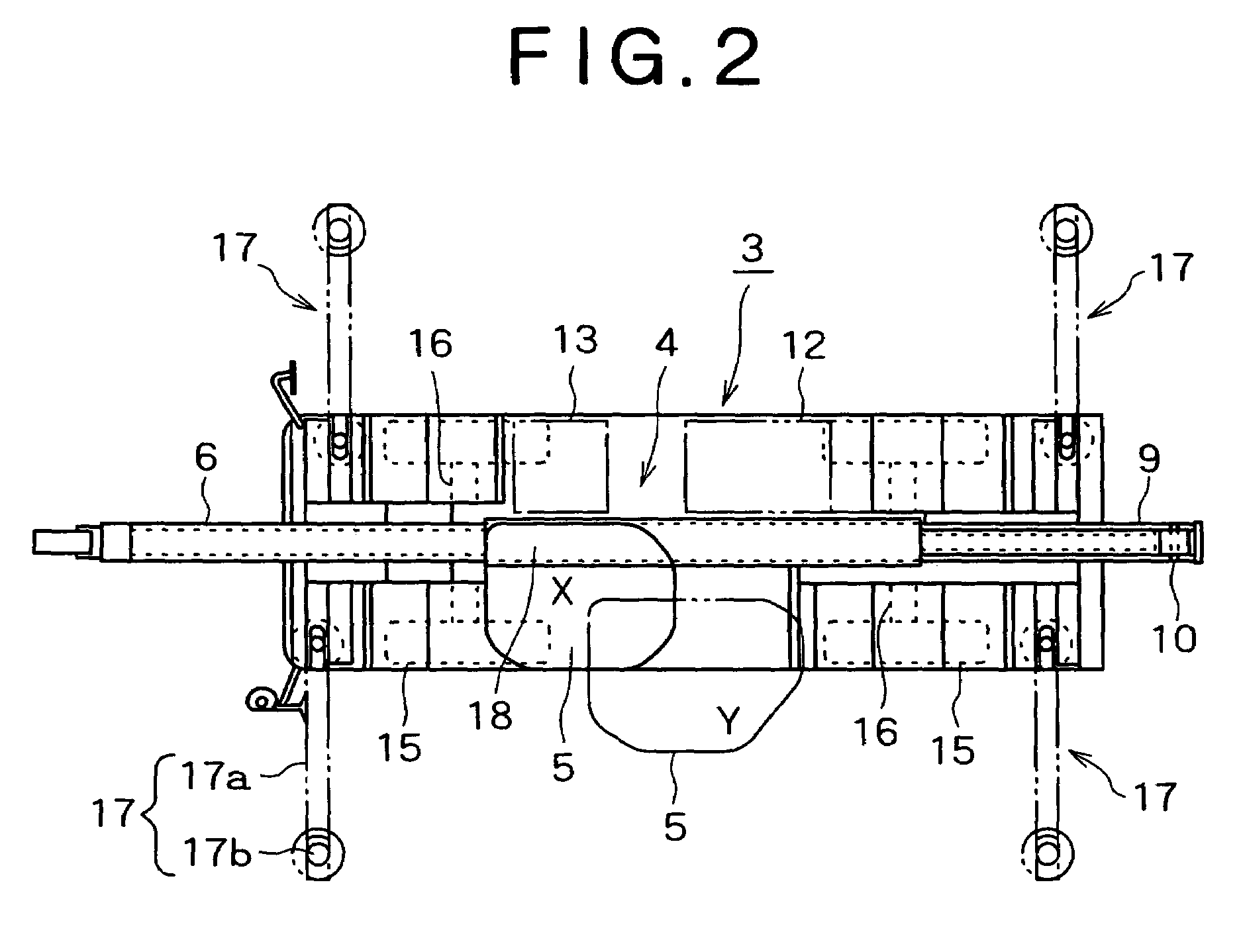Self-propelled working machine
a self-propelled, working machine technology, applied in the direction of trolleys, load-engaging elements, lifting devices, etc., can solve the problems of lowering the height of the machine, the body of the machine becomes unbalanced to the left and right, and the conventional self-traveling working machine including the self-traveling crane, etc., to achieve the effect of reducing the width of the machin
- Summary
- Abstract
- Description
- Claims
- Application Information
AI Technical Summary
Benefits of technology
Problems solved by technology
Method used
Image
Examples
first embodiment
Modification of First Embodiment
[0097](1) In the first embodiment, the cabin 5 is moved in the direction away from the boom 6 by the cabin moving means 19. However the cabin 5 may be mounted on the boom 6 so as to be free to rock through the support shaft, a cylinder may be provided between the cabin 5 and the boom 6, and the cabin 5 may be held horizontally irrespective of the raising / lowering angle of the boom 6.
[0098](2) In the above-described embodiment, the cabin moving means 19 is provided as interference avoiding means. However, it is possible to instead use a pair of left and right attachment support frames obliquely inclined internally of the machine body from the lower portion of the cabin 5.
[0099]The boom foot pin inclined in the width direction is provided on the attachment support frames, and the boom 6 is raised and lowered along the inclined inner surface of the attachment support frames. In doing so, the boom 6 is stored in approximately the center of the width in th...
second embodiment
See FIGS. 12 to 17
[0107]Only the difference from the first embodiment will be described.
[0108]The frame moving cylinder 8 is disposed externally of the base frame 7 in the rotating frame 4, and the rod end of the cylinder 8 is connected to the extreme end of a cylinder connecting pin 36.
[0109]The cylinder connecting pin 36 passes through the base frame 7 at the rear end of the movable frame 9 and at the lower position of the boom 6 (see FIG. 13).
[0110]A projecting portion from the base frame 7 of the cylinder connecting pin 36, more specifically a portion between the side of the base frame 7 and the connecting portion of the rod of the frame moving cylinder 8, forms a an engaging portion 36a in engagement with a stop portion described later.
[0111]Further, as shown in FIG. 12, the rear ends of both bracket plates 24 of the base frame 7 are formed into an approximately lateral trapezoidal shape whose vertical dimension reduces toward the rear end, and the extreme end thereof is formed...
third embodiment
See FIG. 18
[0135]Only the difference from the first and second embodiments will be described.
[0136]The cabin 5 is supported movably in the width direction by a slide mechanism comprising a guide rail and a guide roller (both of which are not shown) provided between the cabin 5 and the base frame 7, and the lower surface at the rear portion of the cabin 5 and the rear portion of the movable frame 9 are connected by a link mechanism 51.
[0137]The link mechanism 51 comprises an L-shaped turning arm 53 provided rotatably around a vertical shaft 52 on the base frame 7 and having one end pin-connected to the lower surface of the cabin through a slot, and a telescoping body 54 provided between the other end of the turning arm 53 and the rear portion of the movable frame 9. The telescoping body 54 is free to telescope in a telescoping manner by a rod 54a connected to the turning arm 53 through a pole joint 55, and a tube body 54b connected to the movable frame 9.
[0138]In the turning center p...
PUM
 Login to View More
Login to View More Abstract
Description
Claims
Application Information
 Login to View More
Login to View More - R&D
- Intellectual Property
- Life Sciences
- Materials
- Tech Scout
- Unparalleled Data Quality
- Higher Quality Content
- 60% Fewer Hallucinations
Browse by: Latest US Patents, China's latest patents, Technical Efficacy Thesaurus, Application Domain, Technology Topic, Popular Technical Reports.
© 2025 PatSnap. All rights reserved.Legal|Privacy policy|Modern Slavery Act Transparency Statement|Sitemap|About US| Contact US: help@patsnap.com



